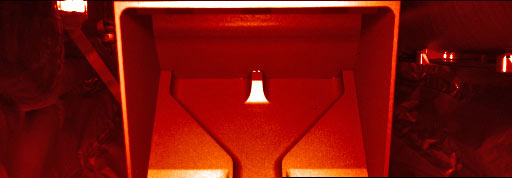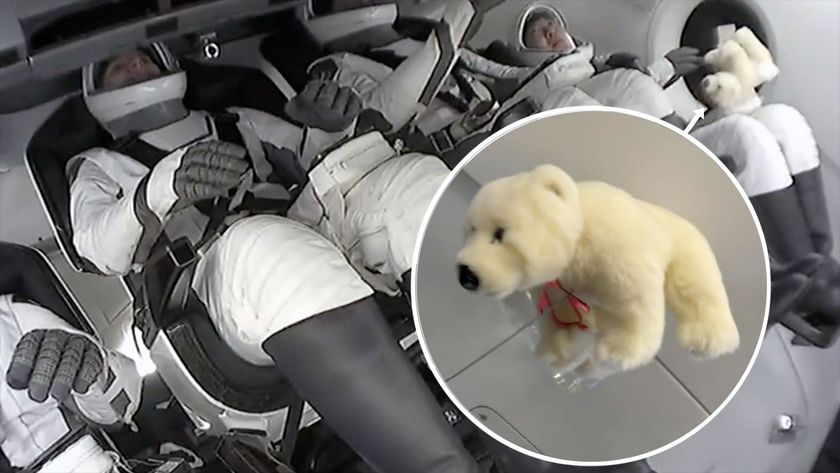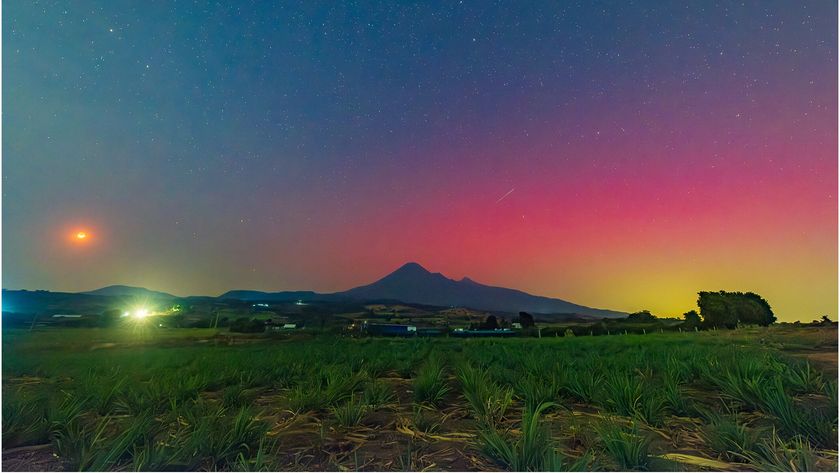Phoenix: Here's the Scoop

NASA'sPhoenix Mars lander continues its journey to the red planet following its Aug.4, 2007 liftoff, and is checking out its equipment along the way.
All tuckedup inside its protective shell, the lander's Robotic Arm Camera (RAC) snappeda photo of the Robotic Arm Scoop. To capture the image, the spacecraft utilizeda red light-emitting diode (LED) lamp. The picture has been beefed up in falsecolor to better represent what the camera saw.
The camera,scoop and otherinstruments are encased in a protective "biobarrier" to ensure noEarth organisms are carried to Mars and guard against "forwardcontamination" of the red planet.
Once on thesurface of Mars, the Phoenix lander will deploy its robotic arm. The roboticshovel will dig trenches, scoop up icy soil samples and dump them intoinstruments on the lander's deck for chemical analysis, then beam the data backto Earth. Once Phoenix scientists receive the soil specs, they hopeto determine whether or not Mars was--or still is--a place hospitable tomicrobial life.
Images fromthe RAC, one of five imaging devices on the lander, will be the only picturestaken and sent to Earth until Phoenix makes a May 25, 2008 approach and landingon Mars. Additional spacecraft-monitoring images will be taken by the cameralater in the cruise stage to Mars.
- VIDEO: NASA's Phoenix: Rising to the Red Planet
- VIDEO: Looking for Life in All the Right Places
- Top 10 Amazing Discoveries by NASA's Mars Rovers
Get the Space.com Newsletter
Breaking space news, the latest updates on rocket launches, skywatching events and more!
Join our Space Forums to keep talking space on the latest missions, night sky and more! And if you have a news tip, correction or comment, let us know at: community@space.com.

Leonard David is an award-winning space journalist who has been reporting on space activities for more than 50 years. Currently writing as Space.com's Space Insider Columnist among his other projects, Leonard has authored numerous books on space exploration, Mars missions and more, with his latest being "Moon Rush: The New Space Race" published in 2019 by National Geographic. He also wrote "Mars: Our Future on the Red Planet" released in 2016 by National Geographic. Leonard has served as a correspondent for SpaceNews, Scientific American and Aerospace America for the AIAA. He has received many awards, including the first Ordway Award for Sustained Excellence in Spaceflight History in 2015 at the AAS Wernher von Braun Memorial Symposium. You can find out Leonard's latest project at his website and on Twitter.











